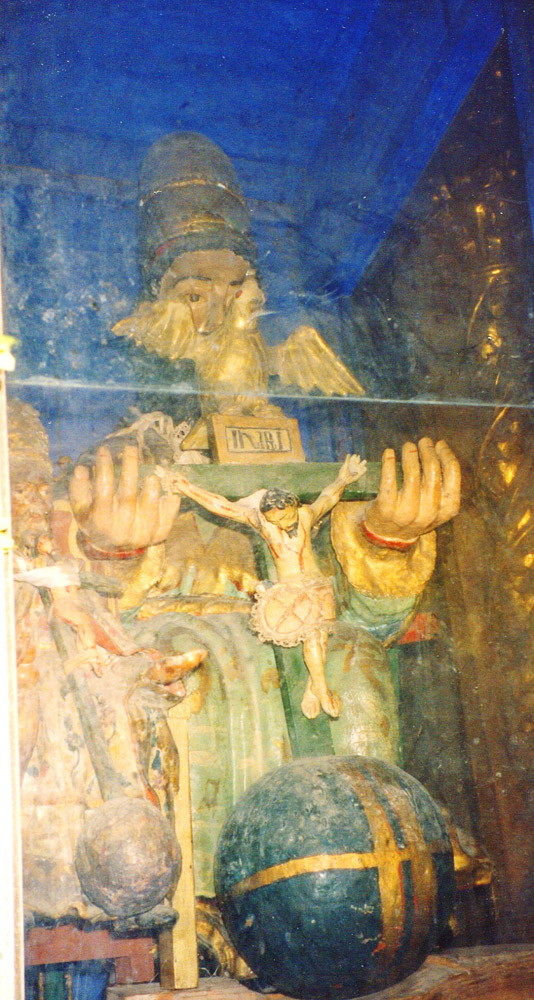Santos in Oaxaca's Ancient Churches
A study of santos in 16th-century and other churches in Oaxaca, Mexico


By Claire and Richard Stracke
Funded by a grant from the Rockefeller Foundation.
In San Juan Teitipac:
Christ
carrying the Cross
Christ: Ecce Homo (1)
Christ:
Ecce Homo (2)
Christ
in a coffin
Christ in the
Pretorium ("Pensive Christ") 1
Christ
in the Pretorium ("Pensive Christ") 2
Christ resurrected
Crucifix (1)
Crucifix (2)
Crucifix (3)
Immaculate Heart of
Mary
Our Lady of
Candlemas
Our Lady of Mount
Carmel
Our Lady of Sorrows
Our Lady of Sorrows
(Soledad)
Our Lady of the
Assumption
Our
Lady of the Rosary (1)
Our
Lady of the Rosary (2)
Palm Sunday Christ
St. Anthony of
Padua
St. Benedict
St.
Hyacinth
St. Isidore the
Laborer
St. John the Baptist
(1)
St. John the Baptist
(2)
St. John the
Baptist, head of
St. Joseph
St. Nicholas Factor
St. Peter Avril
St.
Peter the Apostle (1)
St.
Peter the Apostle (2)
St. Simon Stock
Trinity
Unidentified
saint
